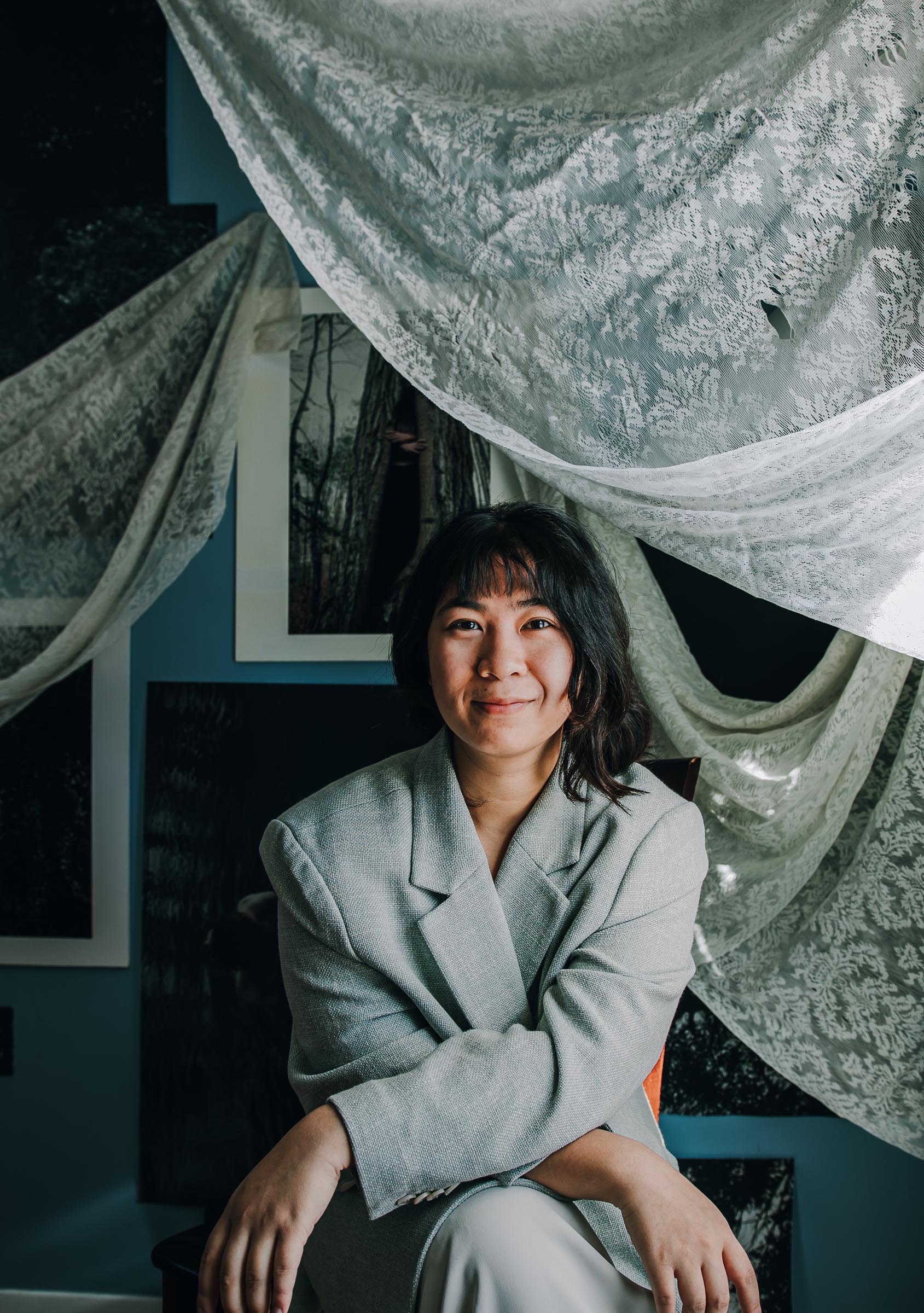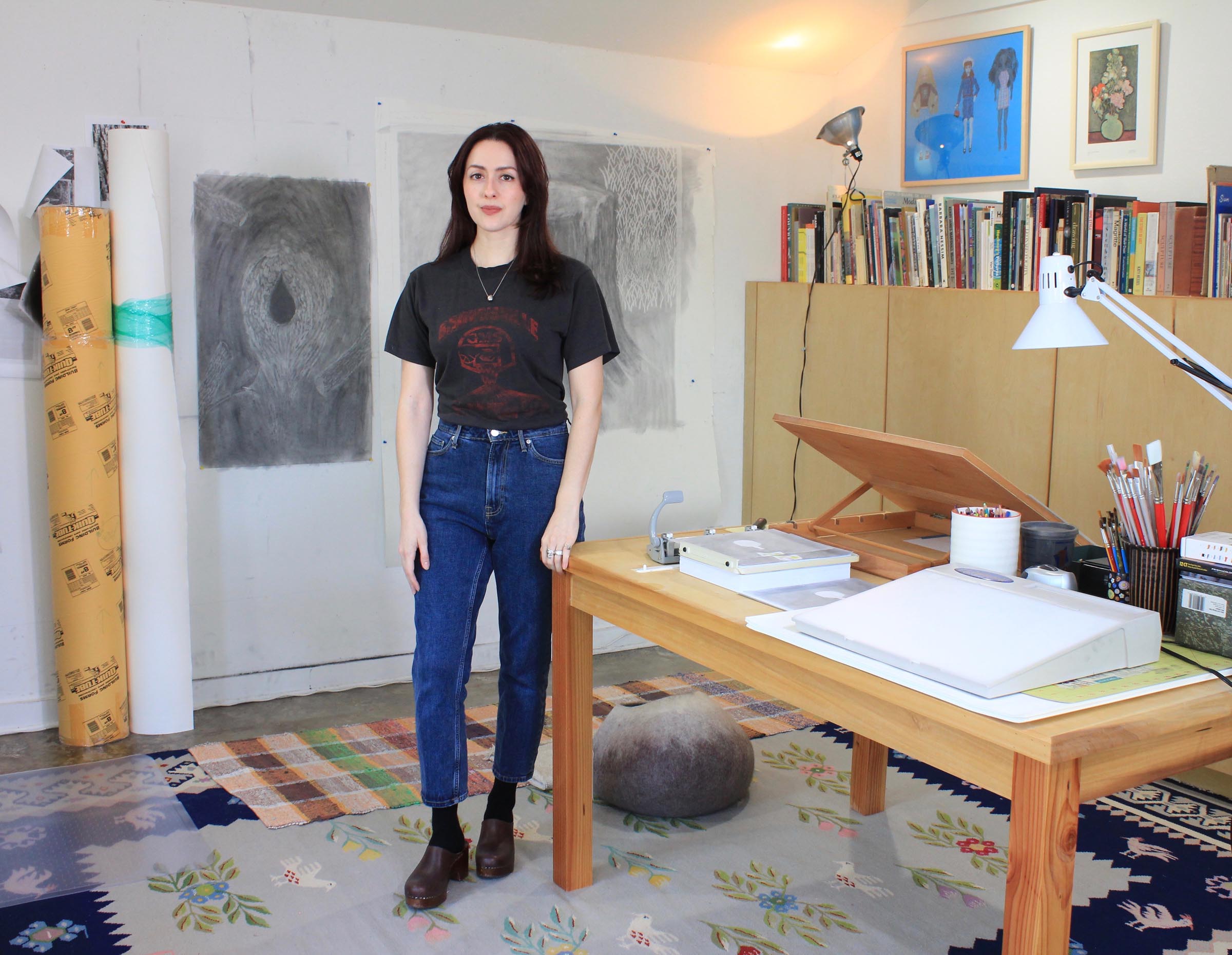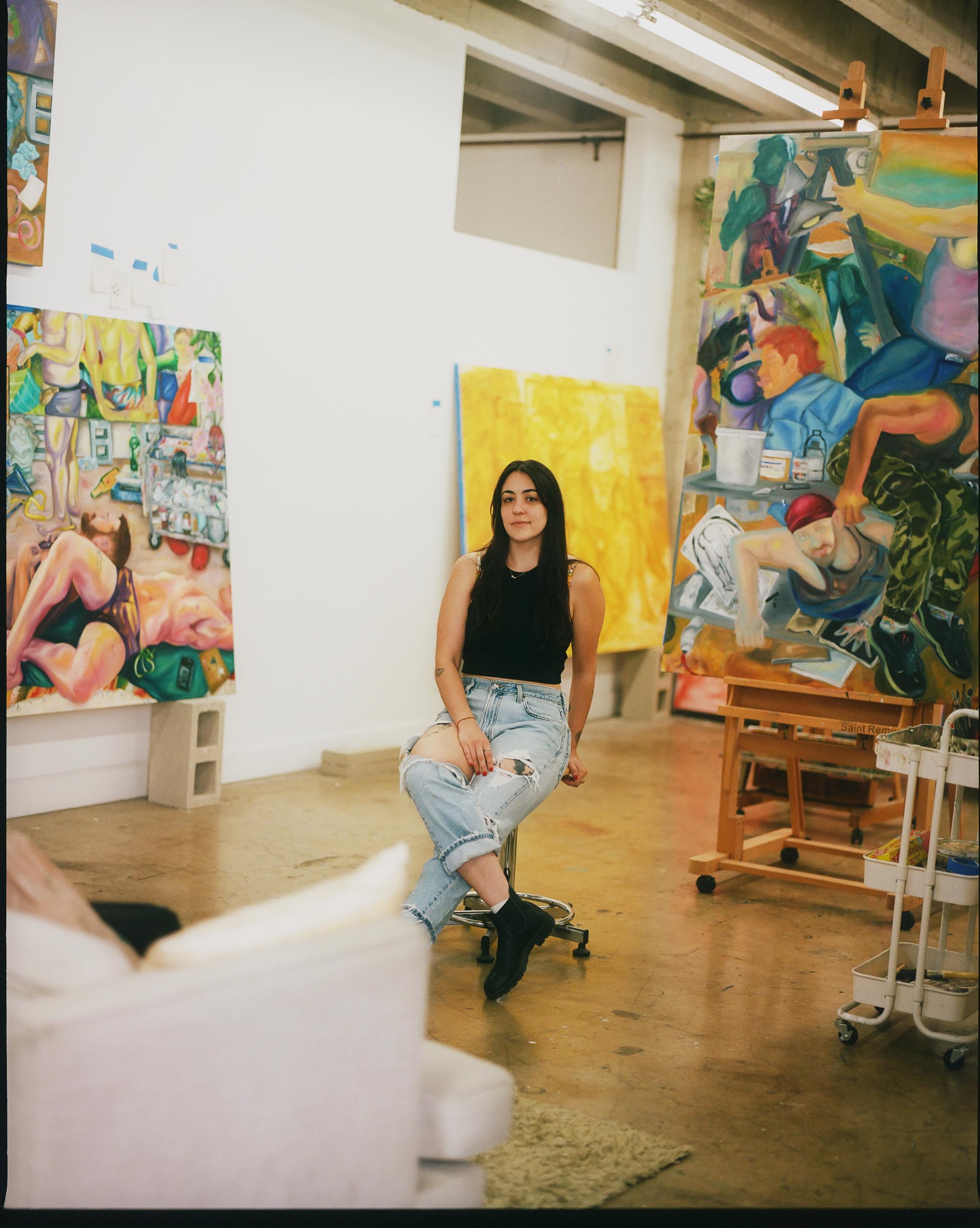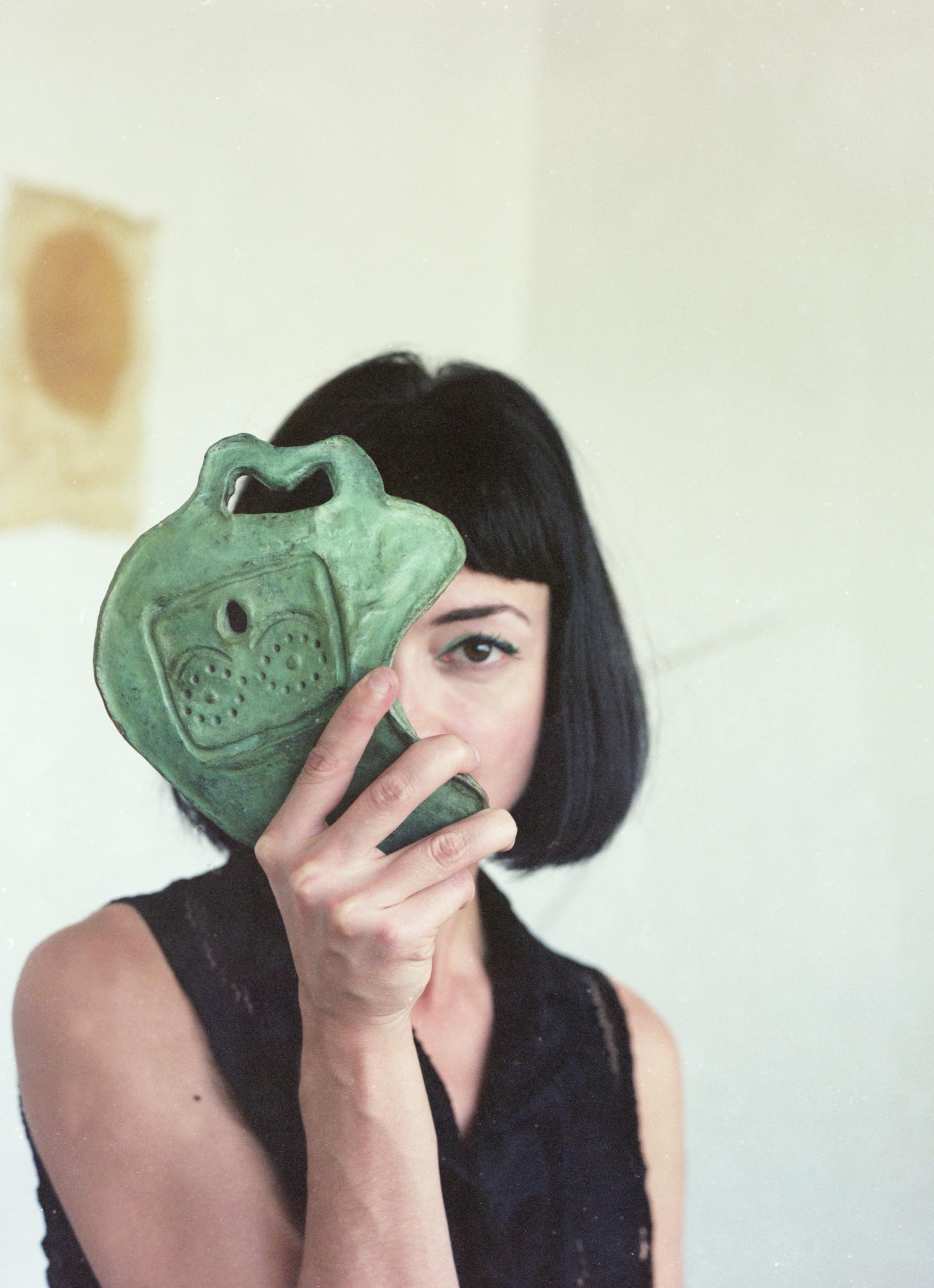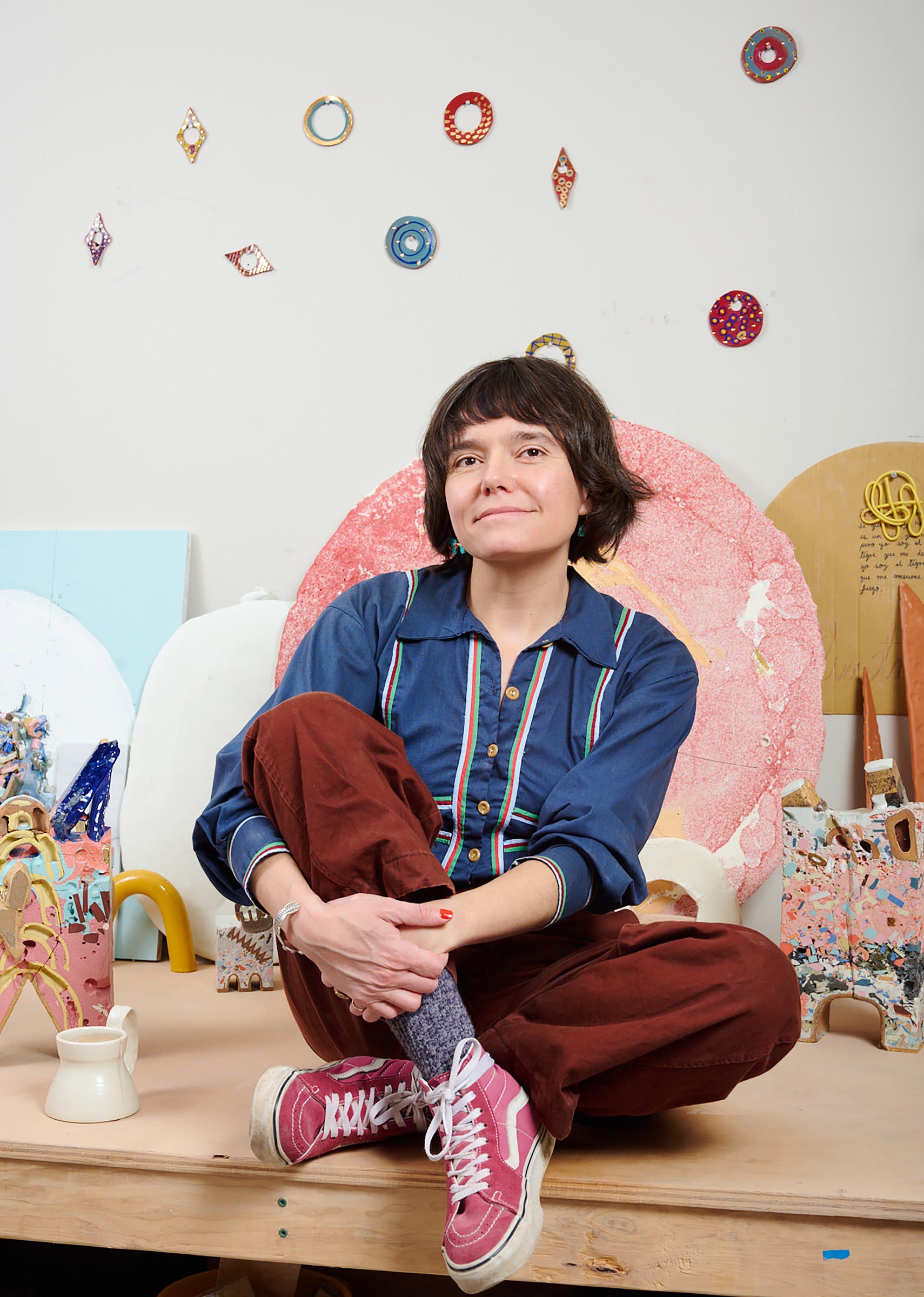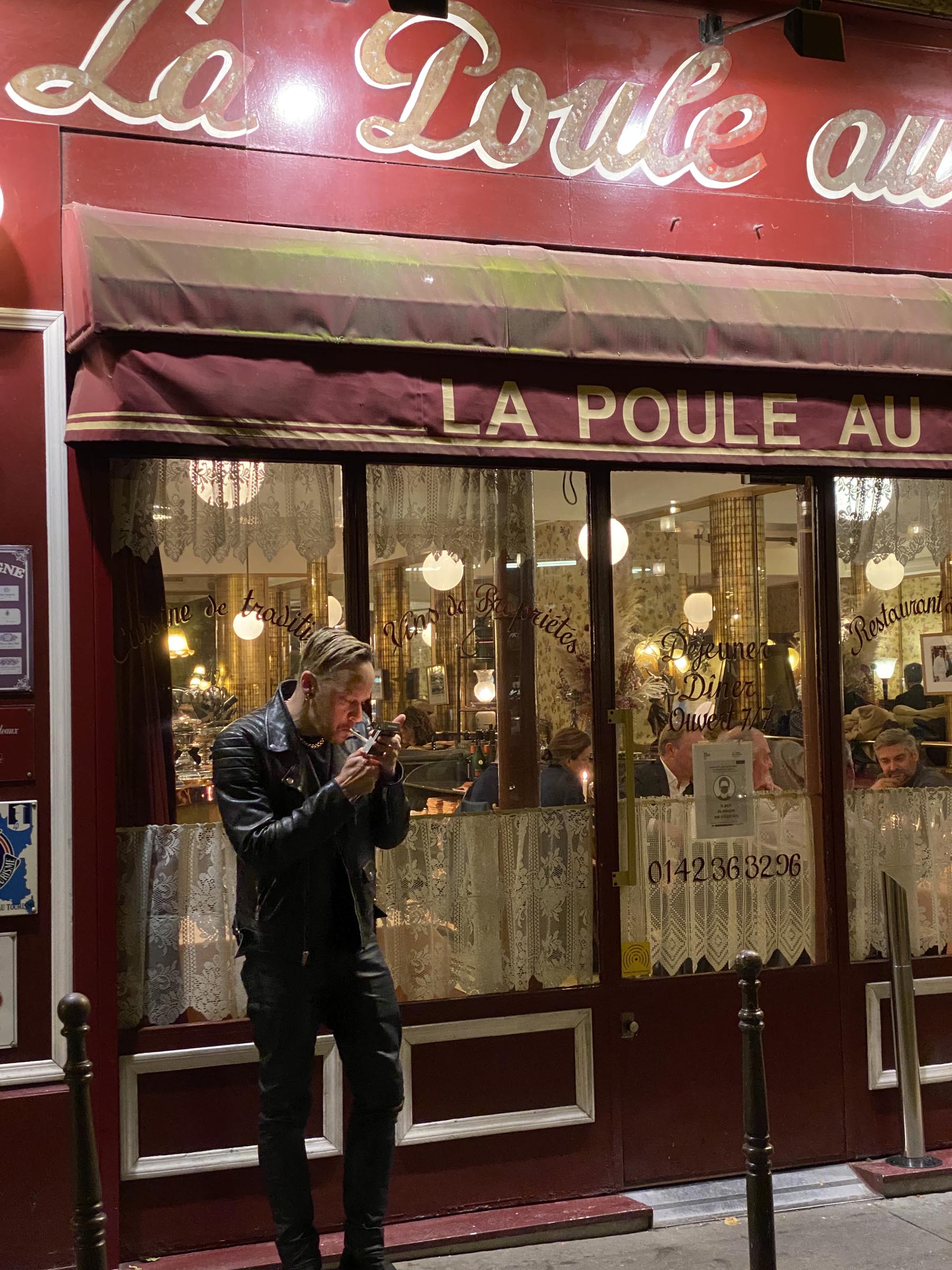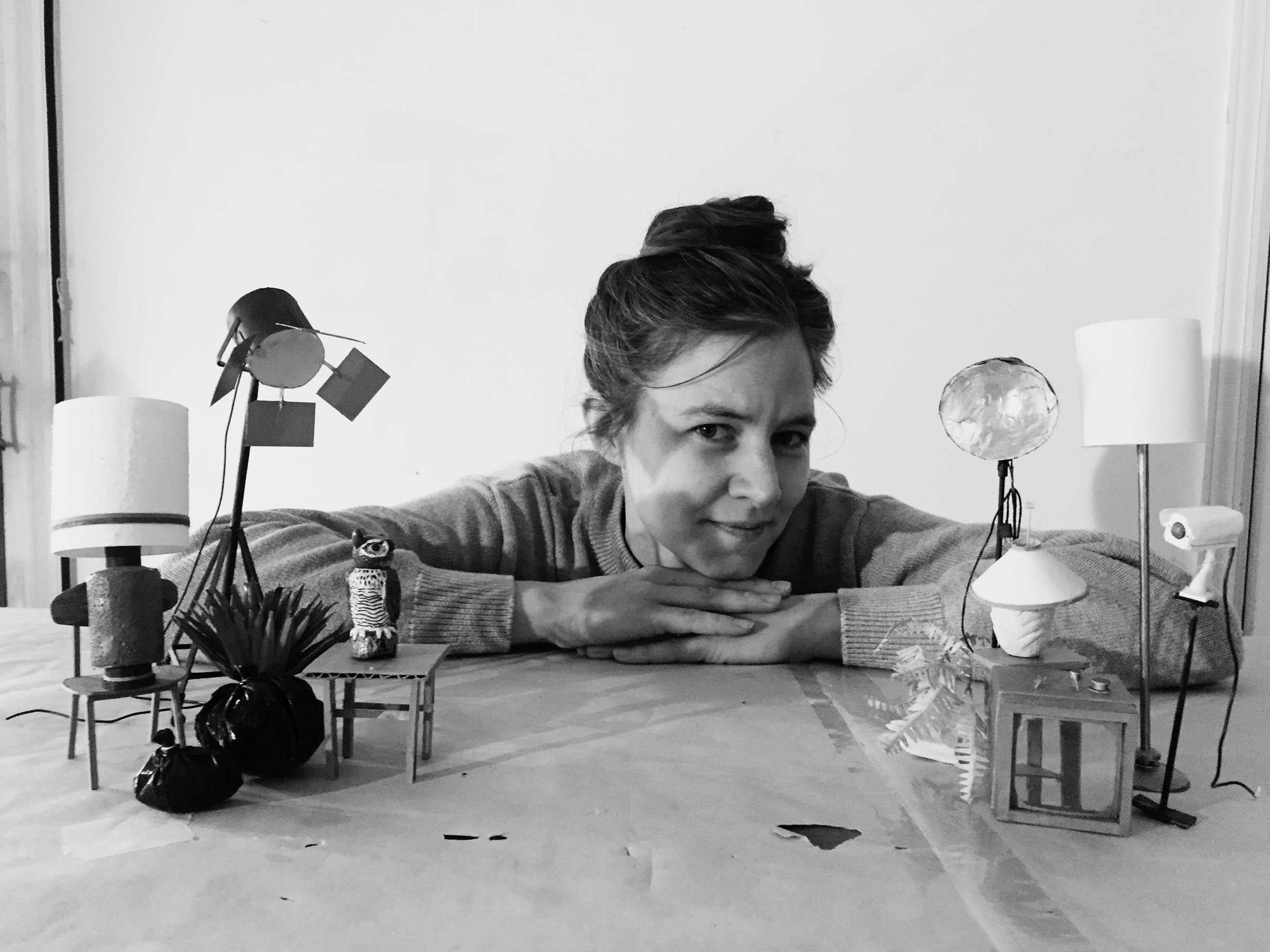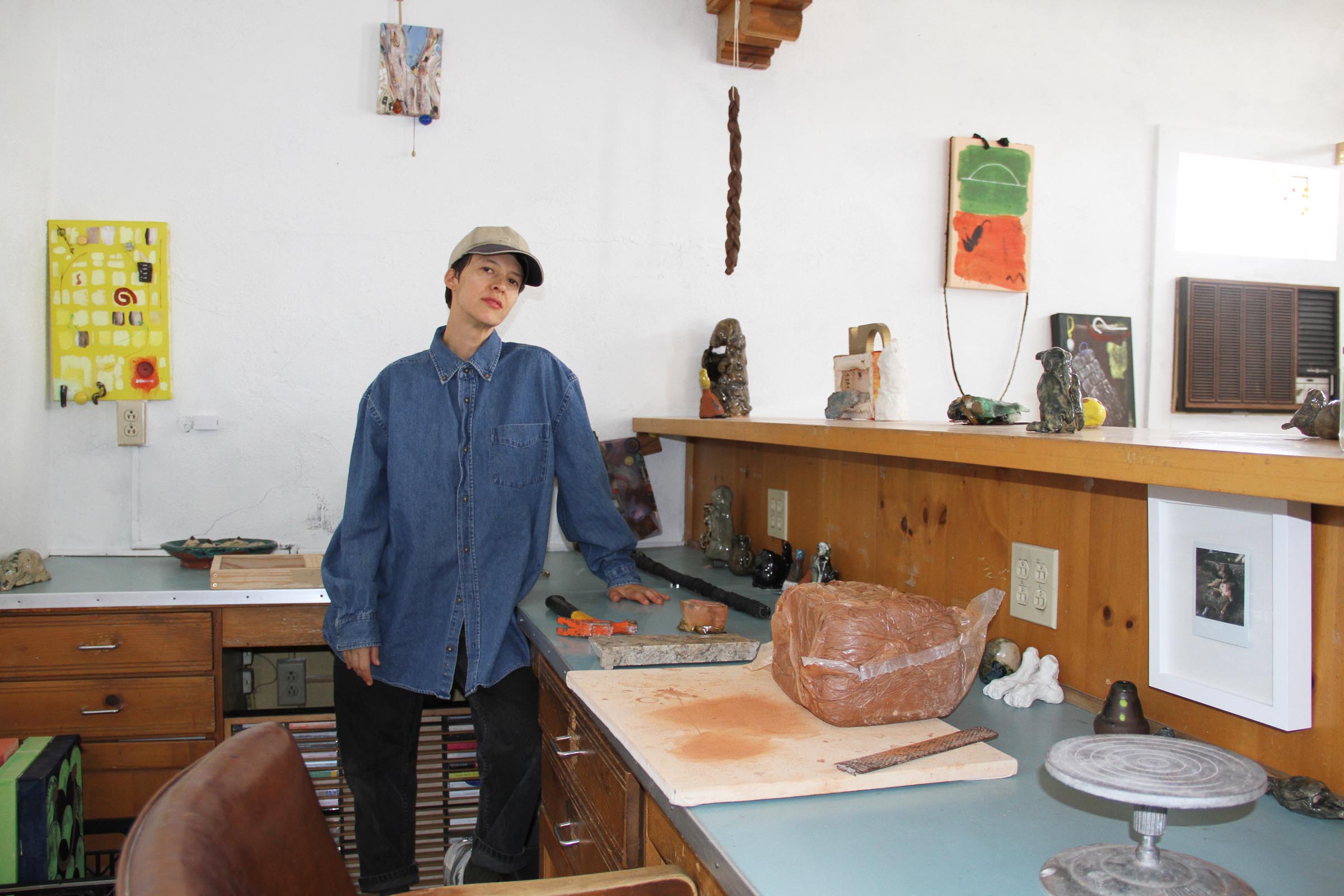How did you get into making art?
That’s a tricky question! I think I have always been making art. I have always been drawing, making my own worlds, writing stories about the characters in them. I remember in school as a kid how I hated, when we had to draw after something, or when we had to learn how to write beautifully in our notebooks. I was so bad at it. All the other girls had the most beautiful, straight italic and could draw buildings and things that looked like reality. My italic was big, uneven, and unreadable. I had so much to write down, so much to tell, so I had to write very fast not to forget the stories. When I started working with rabbit skin glue and pigments some years ago I somehow found a way to use that wild energy in a meditative and balanced way.

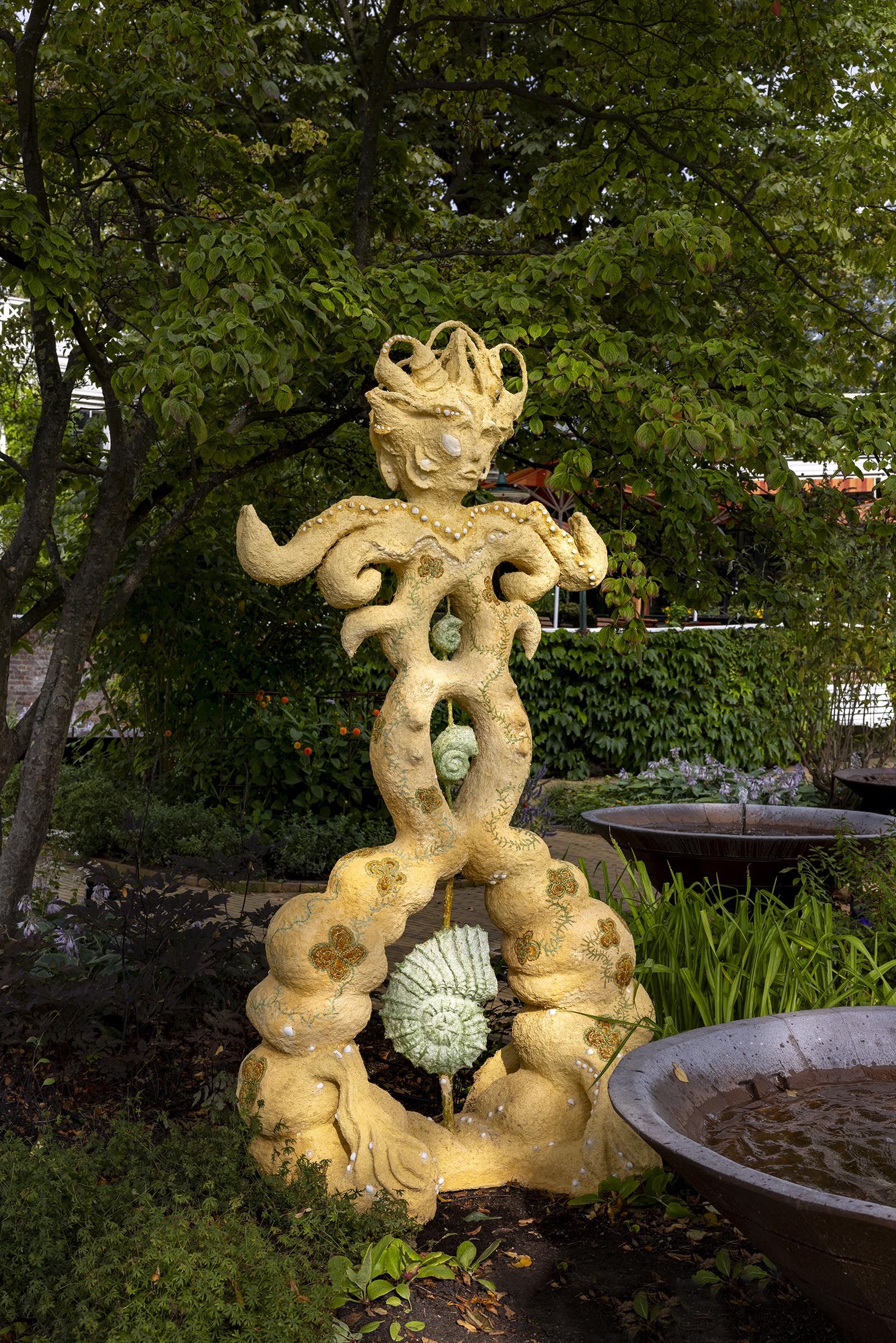
What are you currently working on?
I just finished my first sculptures ever. They are 2,5 meters tall and on view outside in the garden of Tivoli in Copenhagen as part of CHART art fair’s public program. It felt very natural creating them as my painting practice the last years has become more and more three dimensional. First, with the sculptural folding screens and then with my hand sewn and painted costumes used in my long durational performance ‘Creatures of silence’ exploring the connection between the paintings and our bodies, dream and physical reality.
This week I’ll start working on my upcoming solo show in London taking place beginning of next year at VITRINE. I’m looking very much forward to it.
I’m generally very interested in transformation, movement, and connectedness as basic existential conditions.
Cecilia Fiona

What inspired you to get started on this body of work?
The two sculptures are titled ‘Carrying a seashell inside’ and they grew in my studio this summer while reading about the dead seabed surrounding Denmark. With the sculptures I wanted to explore co-existence between species and how our bodies are always connected to our surroundings, always open and fluid and inhabited by other creatures. You could almost say that our bodies are a galaxy or a cosmos to the microorganisms living inside us. Some of which origin from the very beginning of life, meaning we are carrying around some of the very first life inside our bodies. I think that’s magical.
In the same way I wanted the sculptures to somehow also be containers or galaxies for other creatures. Portals, where new species could be born through, where new life could enter the world. I think a symbiosis has happened between the Nautilus sea-creatures and their (the sculptures) bodies. The Nautilus creatures inside have somehow become the pink and yellow creatures’ hearts.
Both sculptures will transform through time. The red seashell, from where the pink creature rises, is hollow, so when it starts raining a birdbath will appear and a new ecosystem will be born. The rough, uneven skin of the yellow sculpture will eventually allow organic material to start growing on the surface, and so the yellow creature will become part of and connected with yet other species.
To me Transformation is magical. It is in these processes, where the limits of normality are exceeded, that new worldviews emerge. In this way, magic can create new perspectives.
In my practice I’m generally very interested in transformation, movement, and connectedness as basic existential conditions. I see my works as ecosystems, where one link leads to the next, and where all beings are in constant transformation towards new stages of life and new ways of existing.
In my art there is a longing for connectedness, to enter a process of transformation that transcends borders.

Do you work on distinct projects or do you take a broader approach to your practice?
I think it’s always a combination of exploring something more specific and at the same time there are themes and questions I keep returning to and answers I cannot stop searching for.
For instance, some time ago I read about the posthumanist Rosi Braidotti and her thoughts on Nomadic Subjectivity, which I still find really exciting.
With the idea of nomadic subjectivity, I am both me and you at the same time. I am me and I am the flower in my garden. It is an image of human beings that creates connectedness across species.
Curiously, the bodies in my works have become more and more open and limitless; Creatures grow out of hands and are born out of mouths and transformations take place out of all openings.
If the world is experienced as magical and you can transform into anything, then you are everything and everything is alive with the consequence that we have to take care of each other and nature. In this way, you can perhaps say that magic at best – and used in the right way – leads to care and presence.

What’s a typical day like in your studio?
I arrive in the morning and make some coffee or tea, I put on music and start drawing a bit and sometimes I’m also looking in some of the art books I have in my studio. Then I do a little meditation, clearing my mind.
Right after that I start painting. I paint for many hours in a row withoutbreaks. I’m painting with a very small brush and when doing that for many hours it becomes meditative, like you start entering a trance. The music I’m listening to while working is very slow and dreamy and helps opening up the meditative state of mind, I like to be in while working.
I never know where the process of a work will take me. That’s the whole point of painting; to follow my intuition and see where I end up. It is a search for answers that can only be sensed and felt in fleeting moments.
Sometimes I feel like trying to be a flower, and I can be when I paint, I’m no longer limited by my shape.
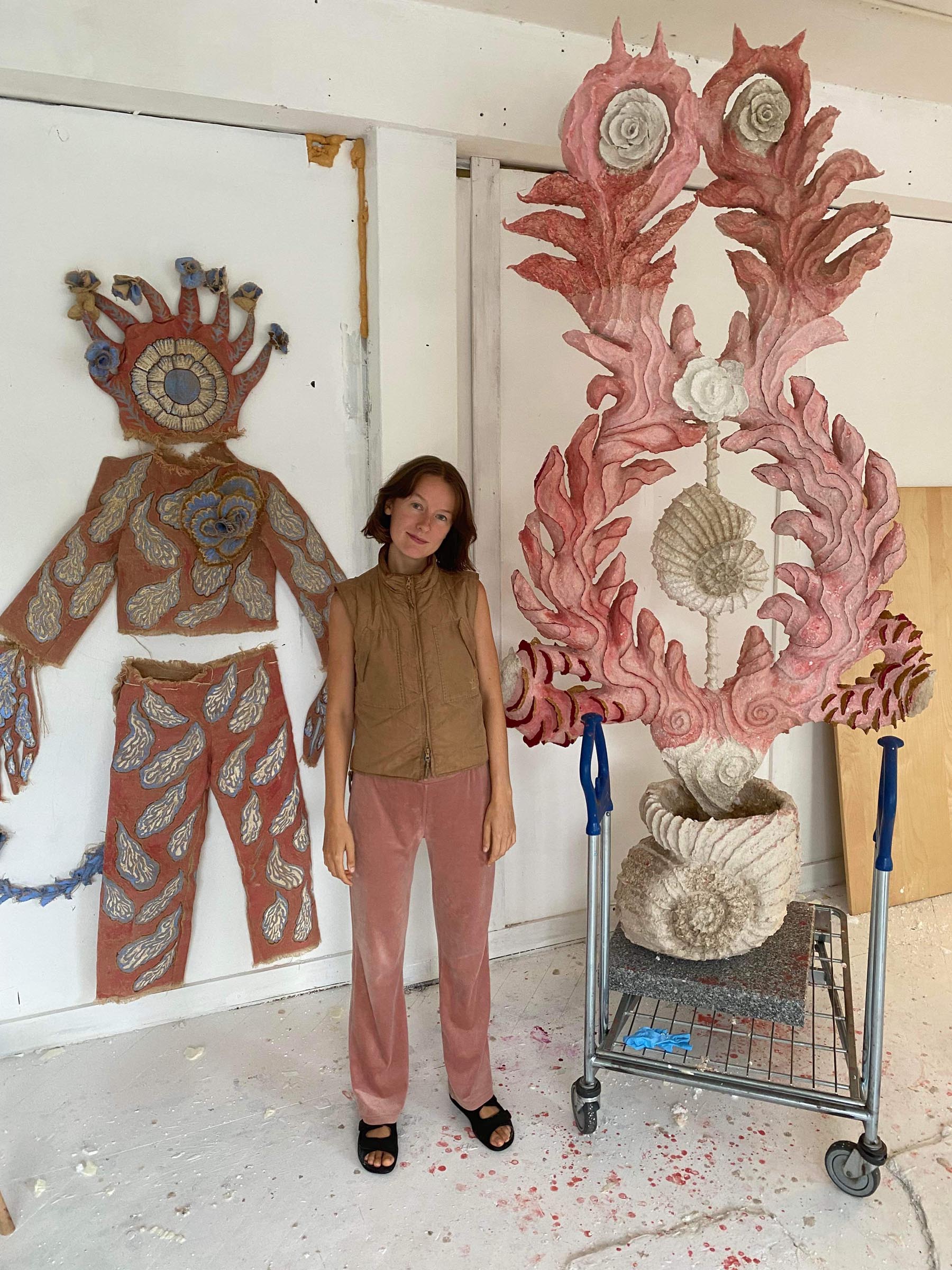

Who are your favorite artists?
I am drawn to the artists who explore the invisible and imaginary and leave room for the enigmatic and mysterious. The ones that link worlds together.
There is a long list of artists I admire. At the moment one of my absolute favorite artists is Wangechi Mutu. I saw her solo show at New Museum in NY, and it was such an inspiring experience and a very important show in my opinion.
Also, I will mention Laure Prouvost. She had a solo in Copenhagen some years ago full of female life-giving power. Also, Leonora Carrington, Inger Christensen, Hilma af Klint and William Blake are some of my favorites that I keep returning to for inspiration. And Kiki Smith, Emma Talbot, Naudline Pierre are among some of my favorite living painters.
I think they all get a lot of attention right now because we long for hope and care both for each other and for the planet. At least I do.
For me, there is an enormous amount of hope in art – because it is in the process of creating a work that everything is possible. The world on the canvas is moldable via the imagination.

Where do you go to discover new artists?
I use Instagram a lot for that. You have the opportunity there to suddenly through many unknown roads ending up discovering an artist from the other side of the world whose work you fall in love with. The world becomes bigger and more connected.
But of course I also enjoy going to physical shows and discover new artists there. I think especially solo shows are great for discovering new artists. I love when you really get a chance to dive into an artist’s universe and language and when you see someone unfold their vision in many different dimensions.
I also like to look in thrift shops for art books, I think that is often the best way to rediscover old artists. Sometimes you find books there full of magic works that you never knew existed.
Learn more about the artist by visiting the following links:
























